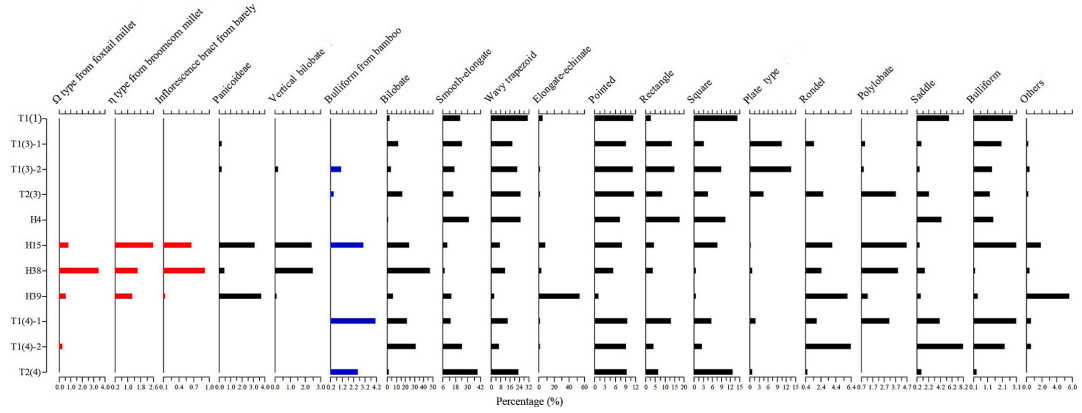J. Archaeol. Sci.: Rep.|Latest Findings from Phytolith Analysis at the Qugong Site, Central Tibetan Plateau
Recently, the Center for Archaeological Sciences, Sichuan University, in collaboration with the Tibet Autonomous Region Institute of Cultural Relics Protection, published the latest results of phytolith analysis from the Qugong site in the international archaeological journal *Journal of Archaeological Science: Reports*. This research investigates the possibility of local cultivation of foxtail millet and broomcorn millet in the central Tibetan Plateau around 3,400 years ago. Han Yutong, a master's student from the School of Archaeology and Museology (Sichuan University), and Dr. Xu Hailun from the Center for Archaeological Sciences are co-first authors of the paper. Assistant Researcher Ma Yongchao and Professor Lü Hongliang from the Center for Archaeological Sciences are co-corresponding authors. Co-authors include Assistant Researcher Chen Xinzhou and Associate Professor Song Jixiang from the Center for Archaeological Sciences, and Research Curator Li Linhui from the Tibet Autonomous Region Institute of Cultural Relics Protection.

No later than 4,800 years ago, foxtail millet and broomcorn millet had spread to the eastern and central Tibetan Plateau, facilitating the exploitation of the plateau by ancient humans. However, regarding whether they could be cultivated in the high-altitude, cold environment, different scholars have proposed conflicting views based on their respective analyses. Because plant seeds are easily transportable, previous archaeobotanical research focusing on such remains has struggled to provide effective answers to these questions and controversies. Therefore, the Tibet Archaeology Team from the Center for Archaeological Sciences conducted systematic phytolith analysis on soil samples obtained from the 2020 excavation at the Qugong site.

Crop phytoliths unearthed from the Qugong site
a. Foxtail millet; b. Broomcorn millet; c. Barley
Team members not only analyzed the stratigraphic deposits of the Qugong culture but also focused on the ash pits from this period. This analysis identified phytoliths from three crops—foxtail millet, broomcorn millet, and barley—and they were primarily found in ash pits. These findings largely rule out the possibility of stratigraphic contamination and further suggest that these crop phytoliths originated from processing by-products. Compared to plant seeds, the vegetative parts of the plants (such as stalks and leaves) which produce abundant phytoliths are more difficult to transport over long distances. Therefore, the discovery of foxtail and broomcorn millet phytoliths provides strong evidence for their local cultivation. The discovery of harvesting tools such as stone knives and sickles contemporaneous with these ash pits, as well as the unearthing of weeds associated with dry farming, offer corroborating evidence for this view. On the other hand, existing paleoclimatic reconstructions for the southern Tibetan Plateau indicate that between 3,600 and 2,300 years ago, the climate was warmer with above-average precipitation. This provided suitable natural environmental conditions for the cultivation of foxtail and broomcorn millet in the region. This is also consistent with the environmental characteristics indicated by the phytolith assemblages discovered in this study.

Statistical chart showing the proportions of various phytolith types unearthed from the Qugong site
The Qugong site is a renowned archaeological site in the central Tibetan Plateau. The site occupies a key position in trans-Himalayan crop exchange. Our recent work has not only revised the chronological framework of the site, but the first systematic phytolith analysis has also provided new scientific evidence for its agricultural practices.
